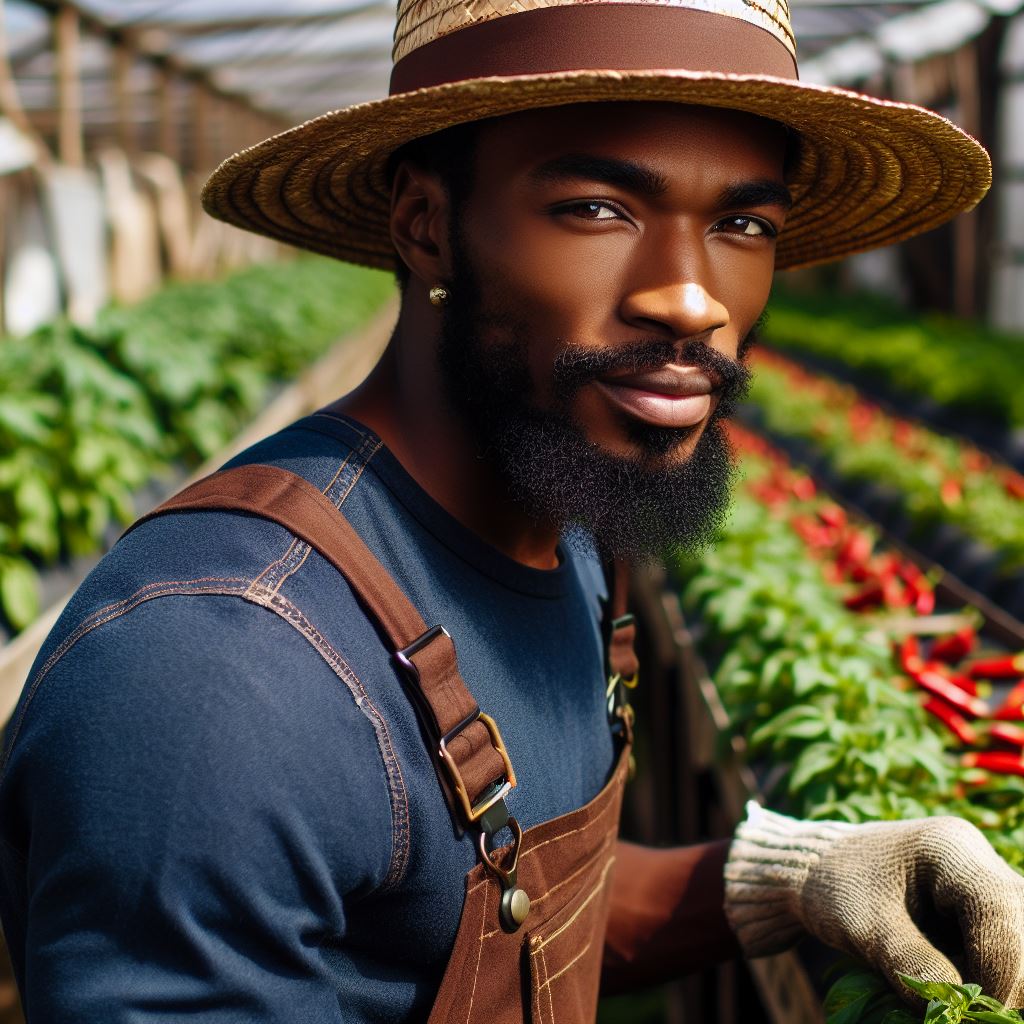Introduction
In rural areas, development is pivotal. Sustainable agriculture is key. Together, they forge a powerful alliance. This synergy is not just beneficial; it’s imperative.
Rural development embodies progress in non-urban regions. It encompasses economic growth, infrastructure, and social well-being.
Sustainable agriculture, on the other hand, is a farming approach that prioritizes long-term environmental health and economic viability.
Now, imagine the impact when these two forces converge. It’s a potent blend. Rural development propels communities forward, fostering economic stability.
Sustainable agriculture ensures that progress is enduring, safeguarding the land for future generations.
Why is this synergy indispensable? First, it guarantees food security. Sustainable agricultural practices secure the food supply chain.
Simultaneously, rural development creates opportunities, reducing dependency on external resources.
Moreover, the collaboration promotes environmental sustainability. Rural development plans can integrate eco-friendly practices.
Sustainable agriculture minimizes ecological footprints, creating a harmonious balance between growth and preservation.
The heart of the matter lies in the thesis statement: “The synergy between rural development and sustainable agriculture is crucial for creating sustainable communities and ensuring food security.”
This is the guiding principle, the North Star that illuminates the path to resilient, self-sufficient communities.
As we delve deeper into this exploration, each layer will reveal the intricacies of this symbiotic relationship.
From empowering local economies to fostering ecological resilience, the sections ahead will unveil the tapestry woven by the intertwined threads of rural development and sustainable agriculture.
Together, they are not just agents of change; they are architects of a sustainable future.
Defining Rural Development
Rural development plays a crucial role in creating sustainable agriculture practices and fostering a balanced ecosystem.
It focuses on improving the quality of life for individuals living in rural areas by promoting economic growth, social development, and environmental conservation.
In this section, we will explore the definition of rural development, its key elements, and the challenges faced in implementing rural development initiatives.
What does rural development entail?
Rural development encompasses various activities aimed at improving the living conditions and economic prospects of rural communities.
It involves the creation of employment opportunities, the provision of basic amenities such as clean water and sanitation, and the enhancement of rural infrastructure like roads, bridges, and telecommunications.
Additionally, rural development emphasizes the sustainable use of natural resources and the promotion of environmental conservation.
What are the key elements of rural development?
Several key elements constitute rural development.
Firstly, infrastructure development is essential for connecting rural areas with urban centers, improving transportation, and providing access to markets and services.
Secondly, education plays a vital role in empowering rural communities and enabling them to participate actively in economic activities.
Accessible and quality healthcare services are another significant element, ensuring the well-being of individuals and improving their productivity.
Moreover, rural development focuses on promoting sustainable agricultural practices to achieve food security and reduce rural poverty.
Lastly, creating employment opportunities within rural areas reduces migration to cities and helps in maintaining a balanced population distribution.
What challenges are faced in implementing rural development initiatives?
Despite the importance of rural development, several challenges hinder its successful implementation. One primary obstacle is the insufficient funding allocated to rural development projects.
Limited financial resources often impede the establishment of necessary infrastructure, healthcare facilities, and educational institutions.
Furthermore, the lack of skilled manpower in rural areas undermines the effective execution of development initiatives.
There is a need to attract skilled professionals and provide adequate training opportunities within rural communities.
Additionally, limited access to resources, such as land and credit, poses a challenge to rural development. It restricts the potential for agriculture and entrepreneurship.
Lastly, resistance to change within rural communities sometimes inhibits the adoption of new practices and technologies necessary for holistic development.
In fact, rural development is crucial for the synergy between sustainable agriculture and the overall well-being of rural communities.
By focusing on infrastructure, education, healthcare, and other key elements, rural development can address the challenges faced by rural areas.
Adequate funding, skill development, and improved access to resources are vital for successful implementation.
It is essential to prioritize rural development initiatives to ensure a balanced and sustainable future for both agriculture and rural areas as a whole.
Read: Impact of Agricultural Tech on Nigeria’s Food Security
Understanding Sustainable Agriculture
Sustainable agriculture and its key principles
In order to achieve sustainable agriculture, it is important to understand its definition and key principles.
Sustainable agriculture refers to a farming system that focuses on producing food in a way that is environmentally friendly, economically viable, and socially just.
This means that it aims to meet the needs of the present generation without compromising the needs of future generations. The key principles of sustainable agriculture include:
Transform Your Career with Expert Guidance
Get personalized mentorship consulting that’s tailored to your unique path. Our expert advice is actionable and exclusive.
Get Started- Minimal use of synthetic inputs: Sustainable agriculture promotes the use of organic and natural methods of pest and weed control, minimizing the use of chemical fertilizers and pesticides.
- Soil conservation: It prioritizes the use of techniques such as crop rotation, cover cropping, and conservation tillage to enhance the health and fertility of the soil.
- Biodiversity: Sustainable agriculture encourages the preservation and promotion of diverse plant and animal species on the farm. This helps to maintain ecological balance and resilience against pests and diseases.
- Water management: It focuses on efficient use of water resources, minimizing pollution from runoff and protecting water sources.
- Animal welfare: Sustainable agriculture ensures the humane treatment of livestock, allowing them to live in natural and comfortable conditions.
The benefits of sustainable agriculture, such as environmental conservation and preservation of natural resources
Sustainable agriculture brings numerous benefits, not only to farmers but also to the environment and society as a whole.
One major advantage is the conservation of the environment.
By adopting sustainable practices, farmers reduce the use of harmful chemicals and contribute to cleaner air, water, and soil. This helps in preserving biodiversity and maintaining the overall health of ecosystems.
Furthermore, sustainable agriculture helps in the preservation of natural resources. Traditional farming methods often deplete soil fertility and contribute to erosion.
Sustainable practices prioritize soil conservation techniques, which improve the long-term health of the soil, leading to increased agricultural productivity.
Sustainable agriculture also plays a significant role in climate change mitigation.
By sequestering carbon in the soil and reducing greenhouse gas emissions through organic farming practices, sustainable agriculture can help combat global warming.
The importance of sustainable agricultural practices in addressing food insecurity
Achieving food security is a major global challenge, particularly in rural areas where agricultural activities are predominant.
Sustainable agricultural practices offer a solution to this problem by enhancing food production, improving farmers’ livelihoods, and ensuring long-term food availability.
Sustainable agriculture promotes diverse crop production, allowing farmers to grow a variety of nutritious foods.
This not only ensures a balanced diet for communities but also enhances resilience against crop failures and diseases.
By employing organic and natural methods, farmers reduce input costs, making farming more economically viable and accessible to small-scale farmers.
Additionally, sustainable agriculture helps to strengthen local food systems.
By promoting local markets and reducing reliance on imported food, sustainable practices enhance food sovereignty and reduce vulnerability to external shocks, such as trade disruptions or price fluctuations.
By addressing environmental, social, and economic aspects, sustainable agricultural practices are crucial for ensuring food security, preserving natural resources, and building resilient communities.
Read: Scholarships and Funding for Agri-Tech Students in Nigeria
The Synergy Between Rural Development and Sustainable Agriculture
Support and Promotion of Sustainable Agriculture through Rural Development Initiatives
- Rural development initiatives can provide necessary funding and resources for sustainable agriculture practices.
- They can establish training programs to educate farmers on sustainable farming techniques and technologies.
- These initiatives can create market linkages for farmers to sell their sustainably produced agricultural products.
- By improving infrastructure in rural areas, such as roads and water supply systems, rural development supports the growth of sustainable agriculture.
- Initiatives can also facilitate access to credit and insurance, enabling farmers to invest in sustainable farming methods.
Contribution of Sustainable Agriculture Practices to Rural Development
- Sustainable agricultural practices result in increased crop productivity, leading to higher incomes for rural farmers.
- These practices also promote environmental conservation, contributing to the overall sustainability of rural regions.
- Sustainable agriculture reduces the reliance on external inputs, fostering self-sufficiency and resilience in rural communities.
- By diversifying agricultural activities, sustainable practices create employment opportunities and improve livelihoods.
- The adoption of sustainable agriculture helps preserve traditional farming knowledge and cultural heritage in rural areas.
Real-life Examples and Success Stories Showcasing the Synergy Between Rural Development and Sustainable Agriculture
- In Kerala, India, the Kudumbashree initiative supports rural women in practicing organic farming, promoting sustainable agriculture.
- The Food for All Africa program in Ghana empowers rural farmers through training in sustainable agricultural techniques, improving food security.
- The Greening Australia project focuses on rehabilitating degraded lands by engaging local communities in sustainable agriculture practices.
- The Permaculture Institute in Brazil trains rural farmers in agroforestry and permaculture practices, enhancing rural development.
- The Sustainable Southwest project in the United States connects rural farmers with urban consumers through sustainable food supply chains.
Overall, the synergy between rural development and sustainable agriculture is evident in various ways.
Rural development initiatives play a vital role in supporting and promoting sustainable agricultural practices through funding, training, and market linkages.
On the other hand, sustainable agriculture practices contribute to rural development by increasing farmers’ incomes, conserving the environment, and creating employment opportunities.
Real-life examples and success stories demonstrate the positive impact that this synergy can have on both agricultural productivity and rural communities.
By recognizing the interconnectedness between rural development and sustainable agriculture, we can work towards creating sustainable and prosperous rural areas globally.
Read: Trends in Agricultural Research: Focus on Nigerian Universities

Advantages of the Synergy
The positive impact of the synergy on the local economy
- Increased employment opportunities for rural communities
- Growth of local businesses and markets
- Boost in income and economic stability
How it enhances food security and reduces dependency on external resources
- Promotes sustainable farming practices and diversification of crops
- Reduces reliance on imported food and volatile global markets
- Improves access to nutritious and affordable local food
How it improves the livelihood and well-being of rural communities
- Preserves traditional farming knowledge and cultural heritage
- Enhances community resilience and social cohesion
- Increases access to healthcare, education, and other essential services
Challenges and Solutions
Identifying Hurdles
In rural development, obstacles abound. Limited resources hinder sustainable agriculture, while outdated practices persist. Accessibility to modern methods and education remains a barrier.
Climate change exacerbates challenges. Unpredictable weather patterns disrupt farming cycles, jeopardizing yields.
This intensifies economic instability, impacting rural communities. Balancing economic growth with environmental conservation emerges as a complex puzzle.
Crafting Solutions
To bridge gaps, capacity building emerges as a key solution. Empowering farmers through education enhances their understanding of sustainable practices.
This, coupled with access to technology, catalyzes agricultural innovation, promoting efficiency and resilience.
Policy reforms play a pivotal role. Governments must enact and enforce regulations favoring sustainable agriculture.
Incentives for eco-friendly practices can stimulate widespread adoption, transforming rural landscapes. Aligning economic policies with environmental goals ensures a harmonious balance.
Fostering Collaboration
Collaboration proves paramount. Governments, NGOs, and local communities must unite. Sharing knowledge and resources creates a formidable force against rural challenges.
Joint initiatives facilitate the dissemination of sustainable practices, fostering a collective commitment to change.
NGOs act as catalysts for change. By working closely with local communities, they facilitate the implementation of sustainable practices.
Governments, on the other hand, play a crucial role in creating an enabling environment through supportive policies and resource allocation.
Local communities, being the heart of rural development, must actively engage. Their involvement ensures the success of sustainable agriculture initiatives.
Together, these stakeholders form a tripartite alliance, reinforcing the synergy needed for lasting change.
Basically, overcoming challenges requires a multifaceted approach. Education, technology, and policy changes lay the foundation, while collaboration among stakeholders provides the necessary momentum.
In this unified effort lies the promise of a sustainable future for both rural development and agriculture.
Read: How Nigeria is Bridging the Gap: Agri-Tech and Innovation
Conclusion
A synergy between rural development and sustainable agriculture plays a crucial role in the overall development of communities.
The importance of this synergy cannot be overstated as it ensures food security, poverty reduction, and environmental sustainability.
To achieve sustainable development, it is essential to adopt integrated approaches that address economic, social, and environmental aspects.
Rural development should not be pursued in isolation but should be aligned with sustainable agriculture practices.
Increased investments are needed to strengthen infrastructure, expand agricultural research, and promote innovative practices.
Awareness campaigns and capacity-building programs should be organized to educate farmers and rural communities about sustainable agricultural techniques.
Supporting initiatives that promote the synergy between rural development and sustainable agriculture is a collective responsibility.
Government agencies, non-profit organizations, and individuals must come together to provide the necessary funding, expertise, and resources.
By supporting these initiatives, we can create sustainable rural communities that are resilient, prosperous, and environmentally friendly.
Let us take action today to invest, support, and spread awareness about the importance of the synergy between rural development and sustainable agriculture.
Together, we can build a future where rural areas thrive, and agriculture sustains both people and the planet.




